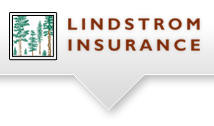Life Insurance
Life insurance is offered in different forms, each with it’s own purpose. One person may have several policies to protect family, business obligations, to develop a charitable contribution upon death, etc.
Term Life coverage pays a benefit if the covered person dies while the policy is in force. Premiums are level for the elected term period, such as 5, 10, 15, 20 or 30 years. Rates may be guaranteed for the entire contract term, or for a shorter length of time (see the fine print). If you wish to continue coverage after the policy term and you maintain your excellent health, you may purchase another policy at reasonable rates. If your health status changes, and you are no longer insurable, premiums after the end of the guarantee period are much higher.
For a quick quote, please feel free to use our quoting software.

Whole Life insurance is the most secure type of coverage. Level rates, guaranteed death benefit, and a cash value accumulation make this attractive for some people. Rates are much higher than term, but are guaranteed not to increase for as long as you live. Much has been written about Whole Life being a bad investment; it should not be used as one. If the situation indicates that you want a “forever” policy to remain in place, even after your mortgage is paid, the kids are through college, the loans have been retired, then Whole Life can offer that security. A cash value grows each year which can be accessed to pay your premium if you have a bad financial turn, and may amount to a significant asset in later years.
Universal Life insurance gives you many options. You may purchase a level or increasing death benefit, fund at a minimum level, fund at a “target” level, or put in a much higher contribution (within legal limits). There are guaranteed rates of interest, “projected” or “current” interest assumptions, and Mortality charges that may fluctuate. Some policies link their returns to various investment vehicles (Variable Life). If you select a Universal Life policy and contribute only the minimum amount illustrated, your “cash value” will increase for several years and may drop to zero if a market downturn is experienced, causing your policy to terminate. You may be asked to increase contributions if this occurs, or you might wish to fund the policy at the maximum levels in early years to avoid this possibility. Careful analysis of the assumptions made in the illustrations is essential to see that your contract will perform as expected.
You may convert your term insurance to a permanent policy with level premiums and a cash value, such as Whole Life or Universal Life. Or, you may wish to purchase some of your life insurance in this form as a foundation to your financial plan. Please contact the office for quotes.
Before running a quote, you’ll want to decide what amount of life insurance is appropriate for your situation. For help with this analysis, please call the office or click below:
For an explanation of common terms, please click below:
Definitions
We’d love to talk with you personally regarding the various insurance companies, plans and rates. Please contact the office for a detailed proposal so we can help you!
Before making any decisions, you’ll want to check the financial strength of the carrier(s) you’re considering. Please use the link below to visit the A.M. Best’s website for financial information on all carriers.


